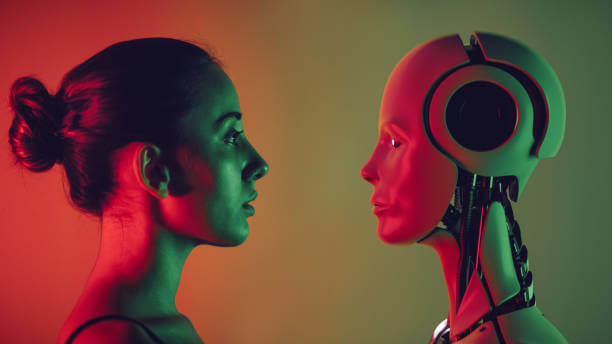In 2025, turning ideas into videos is easier than ever—thanks to tools like Veo 3 and Sora 2 AI.
These two are grabbing headlines, wowing creators, and opening up new creative possibilities.
But here’s the thing: while they both turn text into stunning videos, they’re not the same.
One is built by Google DeepMind. The other? OpenAI.
Both bring serious tech power, but the big question is:
Which one should you use—and why?
Let’s break it down in simple terms, with everything you need to know.
- What Is Veo 3?
- What makes Veo 3 stand out?
- What Is Sora 2 AI?
- What makes Sora 2 shine?
- Veo 3 Strengths (Why You Might Pick It)
- Sora2 AI Strengths (Why It Stands Out)
- Where Veo 3 Wins
- Where Sora AI Wins
- What About Editing & Control?
- Real-World Use Cases
- Availability and Access
- Pricing and Cost
- Creator Community Buzz
- Limitations to Know
- Which Should You Use in 2025?
- Final Verdict
What Is Veo 3?
Veo 3 is Google DeepMind’s latest AI video generator, and it’s a major leap forward.
You give it a text prompt—something like “a drone shot flying over a forest at sunset”—and it creates a realistic, smooth, cinematic video.
And not just a few seconds—Veo 3 can go up to 60 seconds in length, in 1080p HD.
What makes Veo 3 stand out?
• Longer videos: Most AI tools max out at 4–8 seconds. Veo gives you up to a full minute.
• Natural motion: Pans, zooms, slow-mo—it feels like a human with a camera.
• Stylistic control: You can ask for different visual styles—animated, cinematic, moody, playful.
• Visual consistency: Characters, objects, and scenes stay consistent from frame to frame.
It’s clearly aimed at filmmakers, marketers, and content creators who want videos that feel polished and professional.
What Is Sora 2 AI?
Sora 2 AI is OpenAI’s big bet on video. Like Veo, it turns text into video, but with its own special strengths.
What’s unique about Sora is its multimodal understanding.
That means it doesn’t just generate video—it understands how people, objects, and environments should move, look, and interact.
Sora can take a prompt like “a stylish man walking through neon-lit Tokyo streets” and turn it into a vivid, stylized video with tons of detail.
What makes Sora 2 shine?
• Strong realism: Movements feel grounded, natural, and believable.
• Physics-aware: Things bounce, fall, and interact in ways that make sense.
• Rich details: From clothing textures to reflections on glass, it’s high fidelity.
• Better object interaction: Sora knows how things work in the real world—and shows it.
It’s ideal for ads, storytelling, social content, or anything where realism and detail matter.
Veo 3 Strengths (Why You Might Pick It)
1. Longer videos
2. More cinematic motion
3. Better camera angles
4. Custom visual styles
5. High realism with artistic control
Veo feels like a filmmaker’s dream. It’s like having a virtual director and camera crew in your laptop.
Sora2 AI Strengths (Why It Stands Out)
1. Ultra-realistic physics
2. Deep object and scene understanding
3. More natural interactions
4. Extremely high detail
5. Better continuity in complex scenes
Sora nails the realism. It’s great for storytelling, emotional tone, and content that feels grounded in real-world rules.
Where Veo 3 Wins
• Video length: A full minute gives you more space to tell a story.
• Camera control: The movement feels purposeful and cinematic.
• Styling: Want dreamy or comic-book vibes? Veo can do it.
Where Sora AI Wins
• Detail: The textures, shadows, lighting—super crisp.
• Logic: People walk naturally. Objects interact like they should.
• Scene accuracy: Great at keeping everything in place across the video.
What About Editing & Control?
Right now, both tools are limited in manual editing—but:
• Veo 3 gives you style prompts and scene guides, which offer more creative direction.
• Sora leans into understanding—so you can be more descriptive, and it “gets it.”
Neither lets you edit frame-by-frame (yet), but both are moving fast.
Real-World Use Cases
Use Veo 3 if you need:
• Explainer videos
• Cinematic shorts
• Product visuals with flair
• YouTube or ad content
Use Sora if you want:
• Hyper-real storytelling
• Educational or simulation visuals
• Emotional scenes
• Short films or content with motion logic
Availability and Access
• Veo 3 is rolling out to select creators through VideoFX by Google.
• Sora 2 is in limited preview (not public yet), but expected to expand soon.
Both are invite-only for now—but you can sign up or join the waitlist.
Pricing and Cost
At the time of writing:
• No public pricing for either tool.
• Both are still in controlled access stages.
• Expect pricing similar to other advanced AI tools—pay per render or via subscription.
Which Is Easier to Use?
Both are prompt-based, but:
• Veo 3 is great if you’re more visual and want to play with motion and effects.
• Sora 2 is better if you like describing scenes with detail and realism in mind.
Neither requires pro video editing skills—just a good imagination and clear prompts.
Creator Community Buzz
Right now, the AI video creator community is excited about both—but for different reasons.
• Veo is loved by filmmakers who want cinematic control.
• Sora 2 is praised by designers and social media creators for realism and emotion.
Some even use both depending on the project
Limitations to Know
• Veo 3 sometimes prioritizes style over accuracy.
• Sora can get stuck with motion glitches or stiff transitions in fast edits.
• Both still struggle with complex dialogue scenes and sound (for now).
AI video tools are amazing—but not perfect. Yet.
Which Should You Use in 2025?
Choose Veo 3 if you want:
• Artistic control
• Camera magic
• Long-form video storytelling
Choose Sora 2 AI if you want:
• Realism
• Deep scene logic
• Fast, grounded visual content
If you’re a startup, content creator, or visual storyteller—either tool could unlock a new level of creative work.
Final Verdict
There’s no one-size-fits-all answer.
• Veo 3 = the creative director’s dream
• Sora 2 AI = the visual storyteller’s secret weapon
In a perfect world, you’d use both. But if you had to pick just one—let your content needs guide you.
Want cinematic, stylish motion? Go Veo.
Want realism and sharp details? Go Sora.
Either way, AI video tools are changing how we create—and 2025 is just the beginning.
Advertisements










